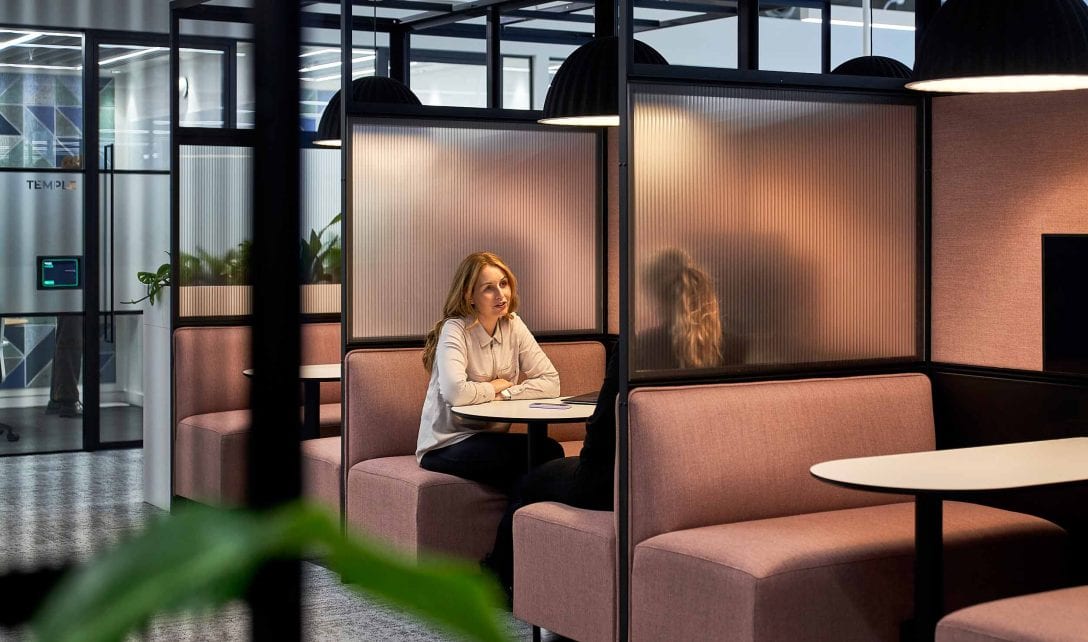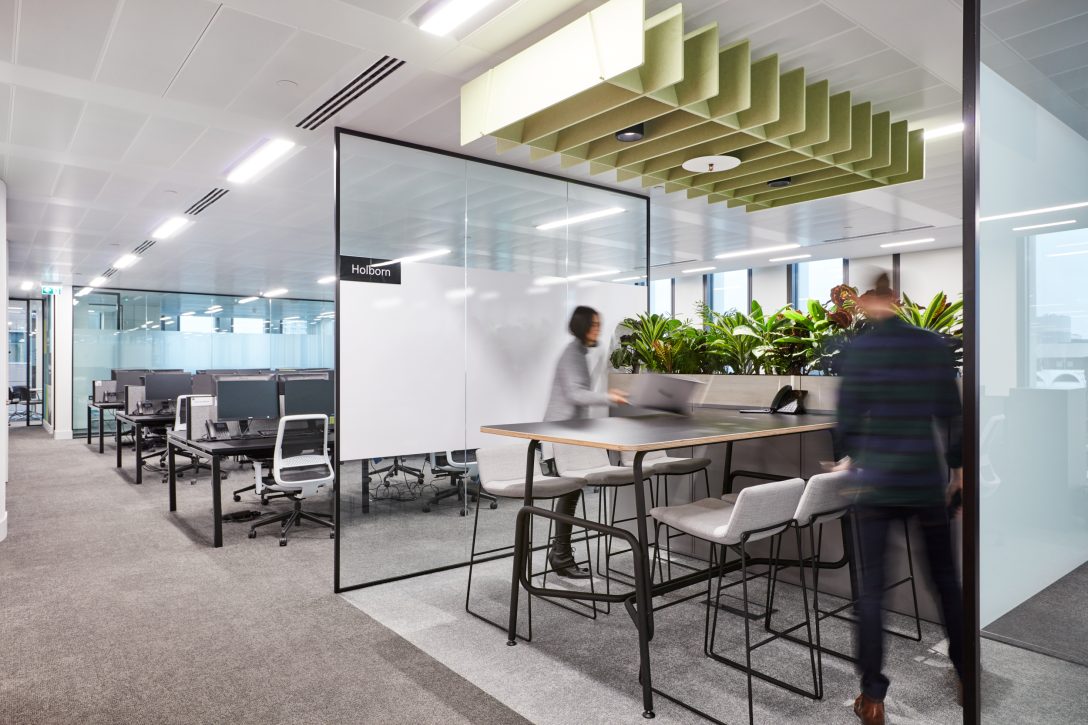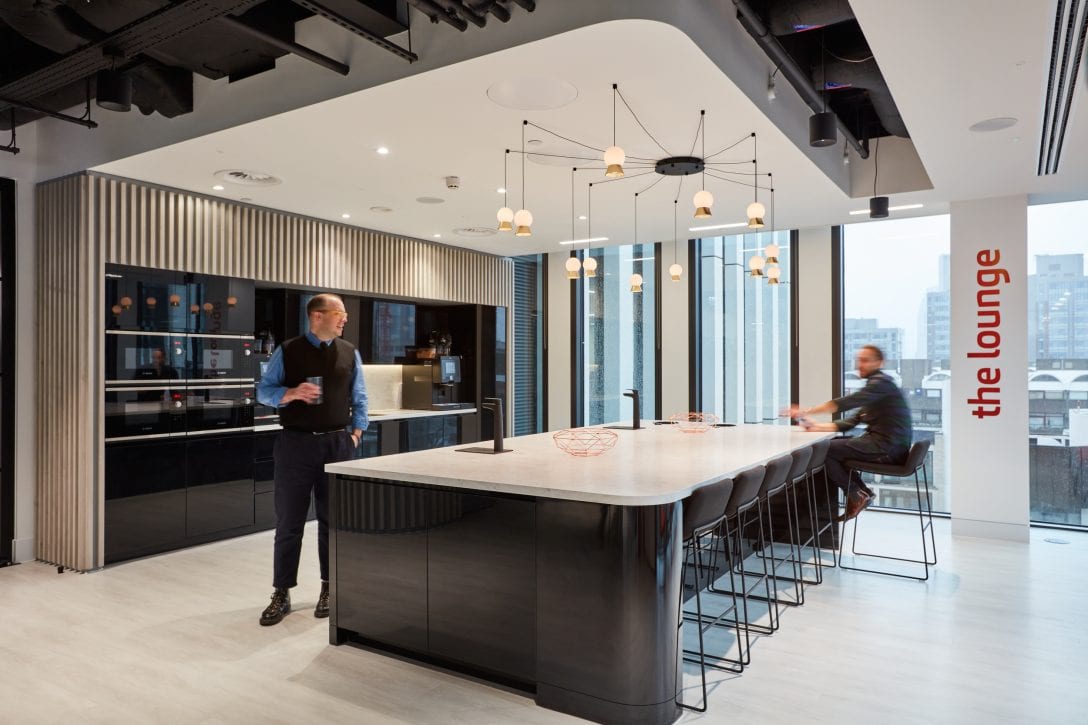The business case for investing in workplace design
We explore quantifiable ROI metrics for workplace investment.

In today’s rapidly changing business landscape, creating a remarkable workplace design has emerged as a strategic imperative for organisations seeking a competitive edge. While the value of a great physical workplace is widely acknowledged, quantifying its objective business case has often been a challenge.
A great workplace encompasses more than just aesthetics; it is a space carefully curated to support productivity, collaboration, employee well-being, and brand image. However, the question remains: how can organisations define the objective business case for investing in such a workplace?
We have compiled a list of quantifiable workplace design and productivity metrics that can provide concrete evidence to support the ROI of creating a great workplace concept and help you make more informed decisions about your workplace investments. By examining measurable indicators mapped against specific themes, we aim to transform the notion of a great workplace from an intangible aspiration to a strategic driver of success.
1. Productivity and performance:
In today’s fast-paced business environment, organisations are constantly seeking ways to optimise their productivity and enhance overall performance. A well-designed workplace plays a crucial role in achieving these goals, as it creates an environment that supports employees in reaching their full potential.
By considering the following key metrics, organisations can measure the direct impact of a well-designed workplace on productivity and performance:
• Number of completed tasks or projects within a given timeframe
• Average revenue generated per employee
• Reduction in error rates or rework percentages
• Time saved due to improved workplace efficiency

2. Talent retention and attraction:
In a highly competitive job market attracting and retaining top talent is a key priority for organisations striving for sustained success. An appealing workplace plays a pivotal role in this endeavour, as it serves as a magnet for exceptional individuals seeking an environment where they can thrive and contribute meaningfully.
To assess the impact of workplace design on talent attraction and retention, organisations can leverage the following metrics, which provide valuable insights into the effectiveness of workplace strategies:
• Reduction in time and cost per hire
• Employee turnover rate
• Number of qualified applicants per job opening
• Employee satisfaction and engagement survey scores
3. Employee engagement and satisfaction:
Creating a workplace environment that fosters high levels of employee engagement and satisfaction is an essential goal for organisations seeking to cultivate a committed and motivated workforce. A great workplace goes beyond mere functionality and aesthetics; it nurtures an atmosphere where employees feel valued, supported, and empowered.
By focusing on the following metrics, organisations can gauge the impact of their workplace design on employee engagement and satisfaction, key drivers of long-term loyalty and organisational success:
• Employee satisfaction scores
• Employee retention rates
• Number of employee referrals
• Absenteeism and sick leave rates
4. Collaboration and communication:
Collaboration and effective communication are key drivers of innovation, productivity, and overall organisational success. An effective workplace design plays a crucial role in fostering an environment that encourages collaboration, breaks down silos, and facilitates seamless communication among team members.
By considering these metrics, organisations can assess the impact of their workplace design on collaboration and communication, essential components of a thriving and innovative workforce:
• Number of successful cross-functional projects
• Average time spent on collaboration or teamwork related activities
• Increase in the number of ideas generated or implemented
• Employee feedback on communication effectiveness

5. Brand image and client impressions:
A well-designed workplace not only enhances the working environment for employees but serves as a powerful tool to shape brand perception and leave a lasting impression on clients. In competitive business landscapes, establishing a strong brand image and fostering positive client relationships are essential for organisations aiming to differentiate themselves and thrive.
Using these metrics, organisations can assess the impact of their workplace design on brand image and client impressions, crucial factors in driving customer satisfaction and business success:
• Client satisfaction survey scores
• Number of positive online reviews or testimonials
• Client retention and repeat business rate
• Increase in new business opportunities or contracts won
6. Health and well-being:
A workplace that promotes physical, mental, and emotional well-being nurtures a workforce that is happier, more engaged, and less prone to health-related issues. Creating a healthy workplace that prioritises employee well-being is not only a moral imperative but also a strategic investment for organisations aiming to optimise performance and reduce costs.
Organisations can evaluate the effect of their workplace design on employee health and well-being, resulting in decreased healthcare expenses and enhanced overall performance, by examining the following metrics:
• Reduction in healthcare costs or insurance claims
• Number of wellness programme participants
• Employee feedback on workplace satisfaction related to health and well-being
• Decrease in absenteeism rates due to health-related issues

7. Organisational culture and values
Creating a workplace that aligns with your company’s culture and values is essential for fostering a positive work environment where employees feel a sense of purpose, belonging, and alignment with the organisation’s mission. A well-designed workplace serves as a tangible representation of the company’s culture and values, reinforcing them through its aesthetics, functionality, and overall atmosphere.
By evaluating the following metrics organisations can gauge the influence of their workplace design on organisational culture and values, fostering an environment where employees flourish and actively contribute to the attainment of company objectives:
• Employee perception of company culture survey scores
• Employee participation in company-sponsored events or activities
• Number of internal recognition or awards for exemplifying company values
• Alignment between employee feedback on culture, values or goals
Quantifiable workplace design metrics for lasting impact
These quantifiable workplace design and productivity metrics provide a strong foundation for understanding the objective business case for investing in a great physical workplace. However, it’s crucial to customize the metrics based on your organisation’s specific goals and industry. By continually assessing and refining these indicators, you can optimise your workplace design and build strategy to maximise its impact on your company’s success.
At AIS, we understand the significance of a well-crafted workplace that drives productivity, engagement, and business growth. Contact us to learn how our workplace design and build solutions can transform your organisation.